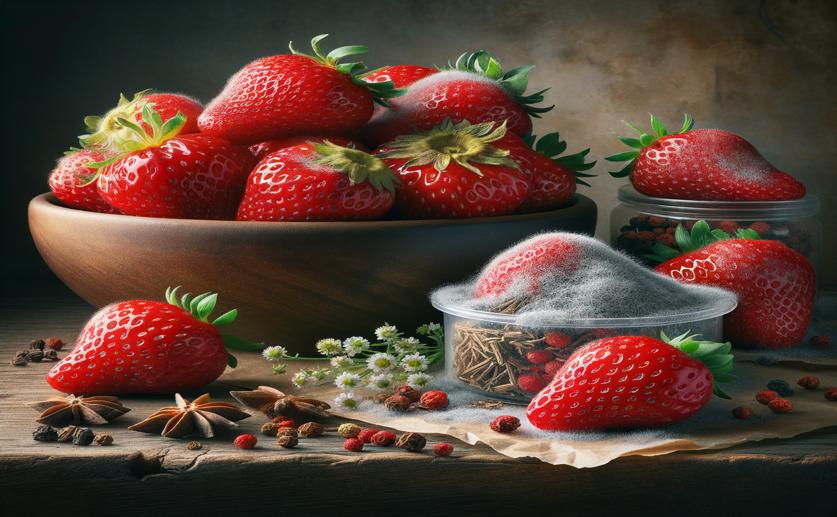
Using Natural Fumigants to Extend Strawberry Shelf-Life and Prevent Gray Mold
Jenn Hoskins
30th May, 2024

Image Source: Natural Science News, 2024
Key Findings
- Researchers at Qingdao Agricultural University found that VOCs from Trichoderma isolates can significantly reduce gray mold in strawberries
- Trichoderma asperellum T7 showed the highest efficacy, inhibiting up to 100% of gray mold on leaves and extending strawberry shelf life by three days
- The VOCs from T7 damage the pathogen's plasma membrane, preventing its growth and spore germination
References
Main Study
1) Biocontrol of strawberry Botrytis gray mold and prolong the fruit shelf-life by fumigant Trichoderma spp.
Published 29th May, 2024
https://doi.org/10.1007/s10529-024-03498-9
Related Studies
2) Mycofumigation of postharvest blueberries with volatile compounds from Trichoderma atroviride IC-11 is a promising tool to control rots caused by Botrytis cinerea.
3) Quantitative interactions: the disease outcome of Botrytis cinerea across the plant kingdom.
4) Inhibitory effect and possible mechanism of a Pseudomonas strain QBA5 against gray mold on tomato leaves and fruits caused by Botrytis cinerea.



 2nd May, 2024 | Greg Howard
2nd May, 2024 | Greg Howard